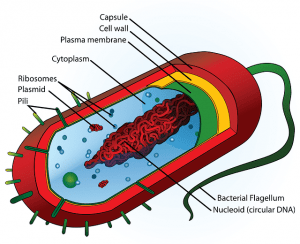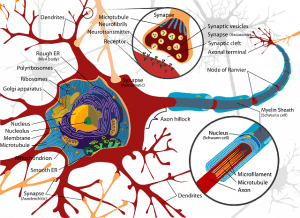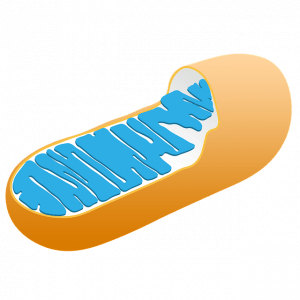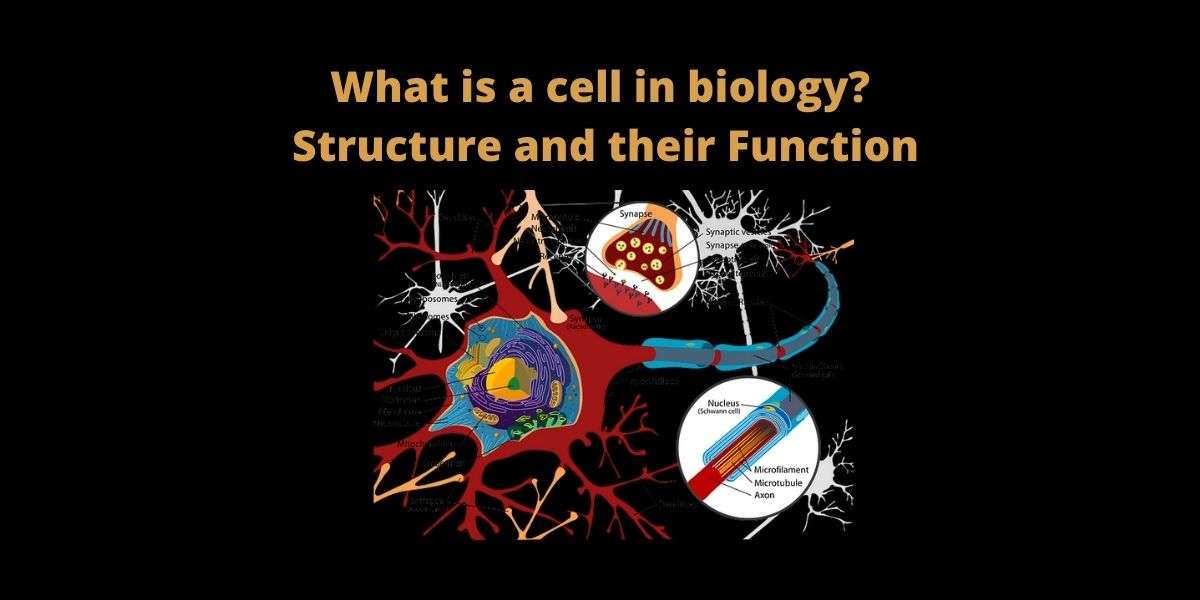All those students who want to know all the important topics of the What is a Cell in biology are reading the right article. In this article, we will discuss all the important topics that are related to the What is a Cell in Biology chapter.
All the important topics about Cells are discussed in this article. In this article, details and fact notes of all the topics about “Cell” are given, hence candidates should read this article so that MCQ questions along with long questions are covered.
What is a Cell in biology?
A cell is the basic unit of life and a cell is the structural and functional unit of life as determined by Robert Hooke. The body of all living things is made of cells. Cells were first discovered by Robert Hooke with the help of a microscope in 1665. The number of cells varies in different organisms. Some cells are unicellular (single cell), whereas others are multi-cellular.

In single-celled organisms like paramecium and amoeba, all the functions (feeding, excretion, respiration, reproduction, movement, etc.) have to be performed by a single cell.
The single-celled organism may be Prokaryotes or Eukaryotes. Multi-cellular organisms develop from a single cell and may have trillions of cells when they grow up.
| Study of Cell | Cytology |
| Single Cell Called | Zygote |
| The cell of the Liver is called | Hepatic Cell |
| The cell of the Lungs is called | Alveoli |
| The cell of the Brain is called | Neuron |
| The cell of the Kidney is called | Nephron |
Shapes of cells also vary from being irregular to round, polygonal, cylindrical, etc. The size of cells also varies from 0.1 micrometers to 170 mm x 130 mm.
Cell Theory
All living organisms are made up of cells or products of cells called cell theory. It was given by Schleiden and Schwann. Cell theory, however, did not explain how new cells were formed.
In 1838, Malthias Schleiden (German Botanist) examined a large number of plants. He observed that all plants are composed of different kinds of cells that form the tissues of the plant.
Also Read: Dual Nature of Matter and Radiation
In 1839, Theodore Schwann (British Zoologist) studied different types of animal cells. He reported that cells had a thin outer layer which is today known as the ‘plasma membrane’. He also concluded, based on his studies on plant tissues, that the presence of cell war is a unique character of the plant cells.
Structure of Cell
The cell carries several cell organelles suspended in a jelly-like substance called cytoplasm which again is bounded by the cell membrane. Most of the cell organelles are common in animals as well as plants.

Cell Organelles in Plants and Animals Cells
Various cell organelles and their functions have been given below in brief:
Cell wall
Cell walls are found in only plant cells. In plants, the rigid outer wall is made of cellulose. It gives a definite shape to the cell and provides strength and protection. It is absent in animal cells.
Cell Membrane
It regulates the movement of molecules inside to outside and outside to inside. It is made up of Phospholipids. The semi-permeable membrane that covers the entire cell acts as a gatekeeper allowing only certain things to pass and acting as a barrier for others.
Nucleus
The nucleus is also called the Brain of a cell or manager of the cell. It is the master controller of entire cell functions. It contains chromosomes that contain genes for controlling different functions.
- The nucleus was discovered by Robert Brown.
- It is the largest part of the cell.
- Nucleic acid-like DNA and RNA are present inside the nucleus.
| DNA | RNA |
| 1. A modal of RNA (Ribose Nucleic Acid) is given by Fredrick Mischer. | 1. Modal of RNA (Ribose Nucleic Acid) is given by Fredrick Mischer. |
| 2. DNA is a double Helix. | 2. RNA is a single Helix. |
| 3. It is found in both nucleus and mitochondria. | 3. It is found in the nucleus and cytoplasm. |
| 4. DNA is known as genetic material. | 4. RNA helps in making protein. |
Endoplasmic Reticulum(ER)
The endoplasmic reticulum is a network of the membrane that is found between the nucleus and plasma membrane. It forms a large network of interconnected membranous tubules that connect the nucleus with the cell’s outer boundary. Ribosomes are found attached to it (rough endoplasmic reticulum) where protein synthesis takes place. It also helps to transport materials from the nucleus to outside the cell. The endoplasmic reticular was discovered by Porter.
Types of Endoplasmic Reticulum
- Rough Endoplasmic Reticulum
- Smooth Endoplasmic Reticulum
| Rough E.R | Smooth E.R |
| 1. Rough E.R is found near the nucleus membrane. | 1. Smooth E.R. is found near the plasma membrane. |
| 2. It is the most stable. | 2. It is less stable. |
| 3. A ribosome is present. | 3. Ribosome is absent |
| 4. Work = Protein synthesis | 4. Work = Lipids/Steroids synthesis |
Ribosomes
They are responsible for protein synthesis. It was discovered by Palade.
- Ribosomes are the smallest part of the cell.
- It is also called the Protein Factory of Cells.
- It is also called the Engine of cells.
Nucleons
A small dark-colored body in the nucleus that is mainly responsible for the synthesis of protein and RNA.
Vacuoles
Vacuoles are absent or of small size in the animal cell but big-sized storage places for plant cells. They also help in secretion and excretion in plant cells.
- Vacuole was discovered by Antoni van Leeuwenhoek.
- It is the space of the cell.
Vacuoles = Reserved food+water+minerals
- It is called a packet of the cell.
Cytoplasm
The cytoplasm is a jelly-like substance that fills the entire cell and organelles are found embedded in it. It helps to maintain the osmotic concentration of the cells.

Chloroplast
The chloroplast is present in the plant cells only. They contain pigments especially the green-colored chlorophyll that absorbs solar energy and converts it to chemical energy to be used in the process of photosynthesis.
Golgi body
It was discovered by Camallio Golgi. It is called a packer/movers/bundle. The Golgi body is also called the traffic police of the cell and the mother of the cell.
Golgi apparatus: They are flattened sac-like structures responsible for the secretion and act as packaging units.
Mitochondria
Mitochondria are also called the powerhouse of cells and energy houses of the cell. It is here that the food gets oxidized and energy in the form of ATP molecules is produced.

- Mitochondrion was discovered by Altman.
- Mitochondria’s name was given by Benda.
- It is the second-largest component of the cell.
- It is the double membrane structure of the cell.
Lysosomes
It is also called Suicidal bags of cells and Digestive bags of cells. They contain digestive juices that help to break down the waste or non-performing organelles.
- It was discovered by Deduve.
- It is a single membrane structure.
- Lysosomes are present in saliva.
- It is more activated in the case of blood cancer.
Why Lysosomes is called Suicidal bags of cells?
Lysosomes have hydrolytic enzymes, these hydrolytic enzymes can digest Foreign particles but sometimes these hydrolytic enzymes are secreted in huge amounts and they can digest the entire cell. Hence, this is known as the Suicidal bag of the cell.
Centrosome
The centrosome is present only in animal cells near the nucleus. It is functional during cell division when it helps to form spindle fibers to which chromosomes get attached.
Nuclear membrane
The nuclear membrane is the outer membrane of the nucleus. It is a porous double-membrane structure that helps in transporting substances in and out of the nucleus.
Chromosomes
They are made up of DNA, the genetic material that controls all the functions of the body and is responsible for the transmission of characters from one generation to the other. In every species, there is a definite number of chromosomes in the nucleus of its cells.
- It was discovered by Bendon.
- It becomes visible during the cell division process.
- Chromosomes are found in pairs.
- In the human body, 23 pairs of chromosomes are present.
A tissue is formed by a group of similar cells that perform similar functions. Tissues found in human beings are:
- Epithelial tissue or the covering tissue, which are found on the internal and external surface of every organ and the skin.
- Muscular tissue, that forms the bulk of the body. They are attached to the bones, internal organs, and blood vessels, and the heart is made of them.
- Connective tissue (bones, blood, cartilage) that connect, bind, or separate other tissues or organs.
- Nervous tissue is found in the brain, spinal cord, and nerves.
Tissues found in plants are:
- Meristematic tissue has cells that keep on dividing and contribute to the growth of plants.
- Parenchyma tissue has thin-walled cells with intercellular spaces. This tissue acts as filler and stores food.
- Collenchymas tissue that has thickened corners of the cells. It provides strength and shape to the plants.
- Sclerenchyma tissue is the hard woody tissue that is dead but gives mechanical strength to the plant.
- Vascular tissue is made of xylem and phloem. The xylem conducts water from roots to all parts of the plants through its hollow xylem vessels and the phloem conducts food through its sieve tube cells that are devoid of the nucleus to make room for the food to pass through.
I hope that you would have got a lot of information related to this article “What is a cell in biology“. If you want detailed notes of any other topic then please comment and we will publish the article on it.
